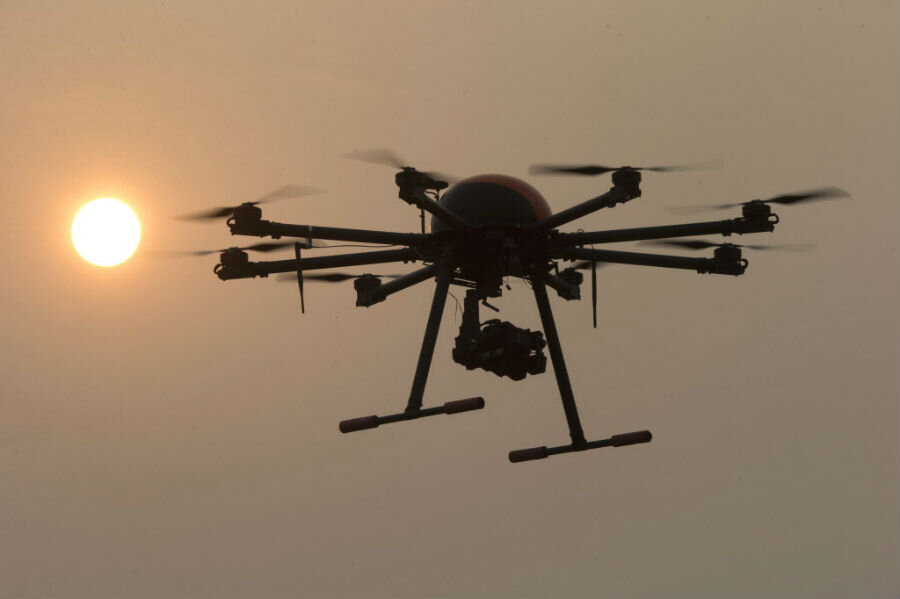Report: ISIS is using exploding drones as battles for Iraq, Syria wear on
Loading...
Reports out of Syria and Iraq indicate that militant groups like Hezbollah and the Islamic State have begun to rely on weaponized surveillance drones as weapons in the conflict.
Syria, which has been embroiled in a civil war since March of 2011, has been scaling up the violence in recent months as countries like Russia and the US increased their support of rival factions in the conflict. The war in Syria has spurred the largest refugee crisis since World War II.
And now, that crisis has become just a little more complicated with the reported introduction of weaponized drones to the conflict by militant groups like ISIS and Hezbollah. While the drones not nearly as sophisticated as the military-grade hardware employed by state actors, the new weapons are expected to have a damaging psychological effect on ISIS's enemies in the region.
"There are a million ways you can weaponize drones – fire rockets, strap things in and crash them," Chris Woods, the head of the Airwars project, which tracks the international air war in Iraq, told the Associated Press. "This is the stuff everyone has been terrified about for years, and now it's a reality."
Two videos show drones allegedly being used by militant factions in Syria, the Associated Press reports. An anonymous American official couldn't authenticate the videos, but told the AP that the US military was aware of militarized ISIS drones in the region. The drones would likely be cheap, commercially-available drones with improvised explosives strapped to them, for the most part.
"This is an enemy that learns as it goes along," Lt. Gen. Sean MacFarland, the top American military commander in Iraq until August, told The New York Times.
There have been at least three known drone attacks in northern Iraq. Of those, only one was fatal, when a surveillance drone shot down by Kurdish forces exploded as soldiers tried to take it apart.
"It's not going to change the overall balance of power in the region, but it matters by the very fact that these are things that are normally beyond the capability of insurgents or terrorists groups," Peter Singer, a senior fellow at the New America Foundation, told the AP. The drones provide a new "high ground" for militants, which used to be the sole purview of better organized and more highly developed national air forces.
Crudely armed commercial flying machines, like model planes, have been a reality for decades. But recent advances in technology have made drones much more attractive to non-governmental combatants as a viable weapon for surveillance and even direct combat against enemy targets.
According to a report published by Armament Research Services (ARES), an independent technical intelligence consultancy, there has been a recent boom in use of drones for various non-state actors (including rebel forces and terrorists) in areas like Ukraine and Palestine. Commercial drones have even been used by Mexico-based drug cartels for smuggling operations. The report says that recent advances in stability, range, and control through cellular devices have made commercial drones an increasingly valuable resource for non-state combatants.
"It is likely that we will see a short-to-medium-term increase in the quantities, varieties, and capabilities of COTS [Commercial Off-The-Shelf] small UAV [Unmanned Aerial Vehicle] platforms employed by non-state actors," says the report. "Whether these groups are able to maintain longer-term use, particularly of the more advanced systems on the horizon, may well hinge on the success of counter-proliferation efforts."
For ISIS, the use of cheap combat drones comes as the group is losing territory: during the first nine months of the year, its caliphate shrank by 16 percent, according to a report from the IHS Conflict Monitor. Meanwhile, the US is making efforts to curb the turn to drones, as well: this summer, the Joint Improvised-Threat Defeat Organization, an office at the Pentagon, requested $20 million to develop a more reliable defense against weaponized commercial drones.
The news of the Islamic State's new drone warfare comes as leaps in commercial drone technology are causing controversy at home, as well, with groups such as the American Civil Liberties Union tagging the devices as potential violators of privacy as police departments across the US expand their local drone programs.
"Drones have many beneficial uses, including in search-and-rescue missions, scientific research, mapping, and more," says a post on the ACLU website. "But deployed without proper regulation, drones equipped with facial recognition software, infrared technology, and speakers capable of monitoring personal conversations would cause unprecedented invasions of our privacy rights."
The site also advocates against placing weapons, non-lethal or otherwise, on commercial drones.






